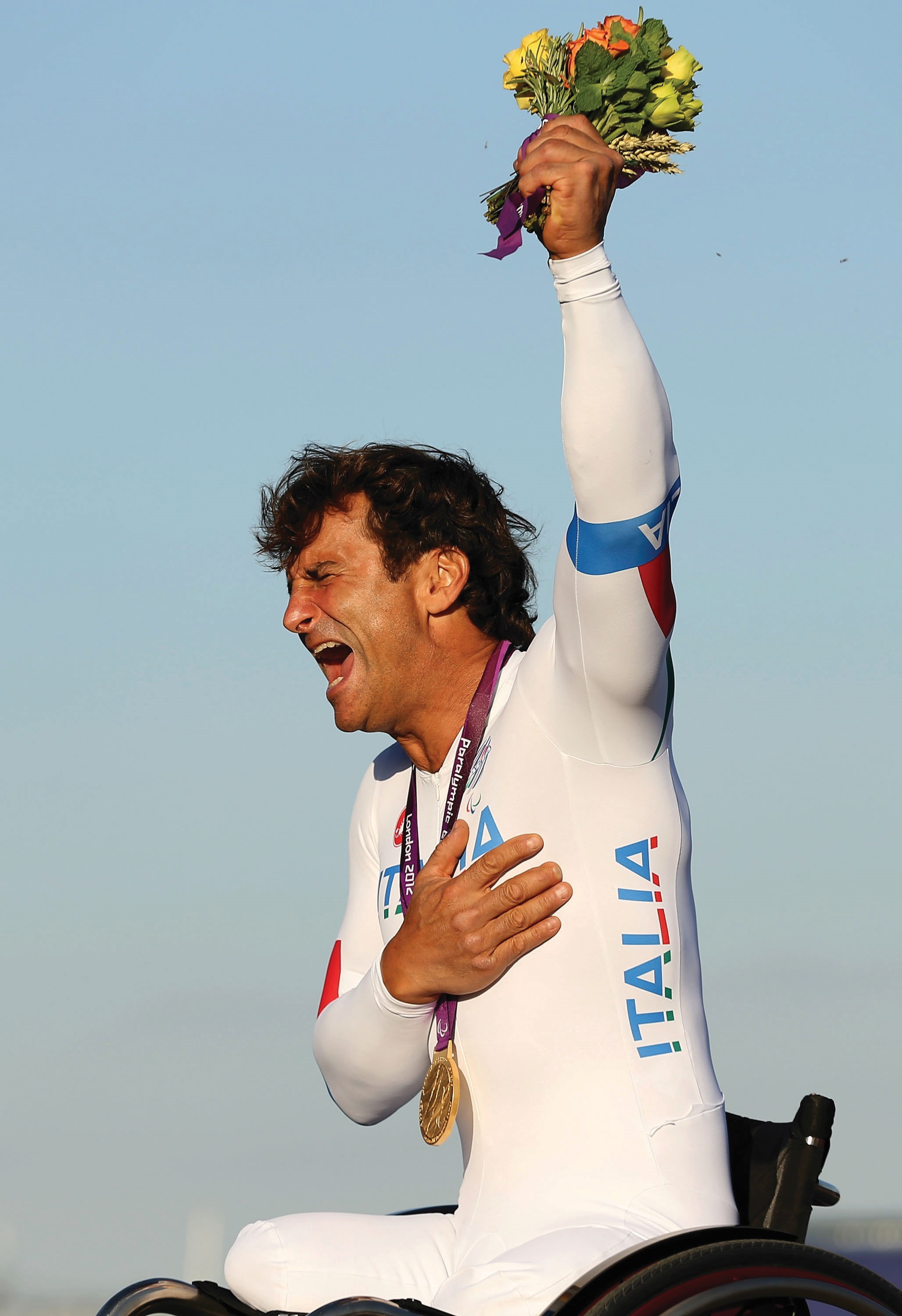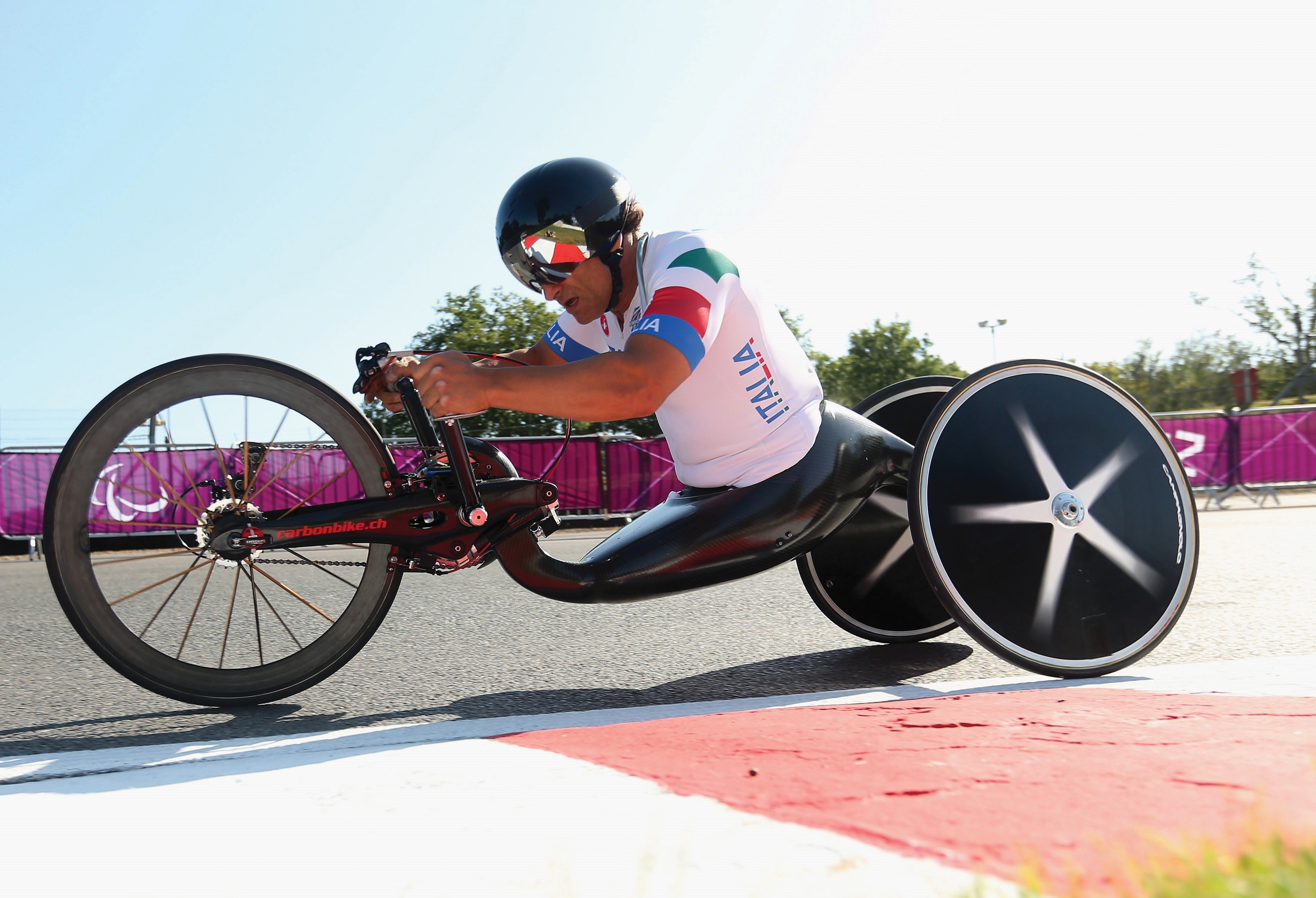
The story of Alessandro “Alex” Zanardi is one of glorious athletic peaks, marred with repeated tragedy. It’s a story of determination and grit, of near Herculean resolve. One of recent history’s most accomplished drivers across multiple motorsports scripted a story whose drama somehow overwhelmed his racing success, and remains a symbol of tenacity nearly unequaled in sport.
The story begins in Bologna, Italy, in the 1970s when Zanardi would watch Formula One races with his father, Dino. Transfixed by the sport, he built a race car out of a box cart and roller skates. Because he didn’t have a combustion engine, he used the family dog for a motor; no horsepower here, this vehicle boasted a single pup power. A couple years later the first of his life’s tragedies struck when his sister, just 15 years old, was killed in a car accident.
“AT THE 2016 SUMMER PARALYMPICS, ZANARDI WON TWO GOLDS AND A SILVER, FINISHING WITH NO LESS THAN A HALF-DOZEN OLYMPIC MEDALS IN HIS CAREER.”
Ironically, this tragic event pivoted Zanardi into entering the world of motorsport, for when he became overly protective to avoid causing his parents any further stress, his father bought him a go-kart to show young Alex that life must go on. “It all started back in 1980 when my father bought me a go-kart, I got addicted immediately,” Zanardi told a reporter of his auspicious beginnings. “And as funny as it could sound at the time, the first lap I took with my go-kart around the local circuit I said, ‘This is what I’m going to do in my life.’”
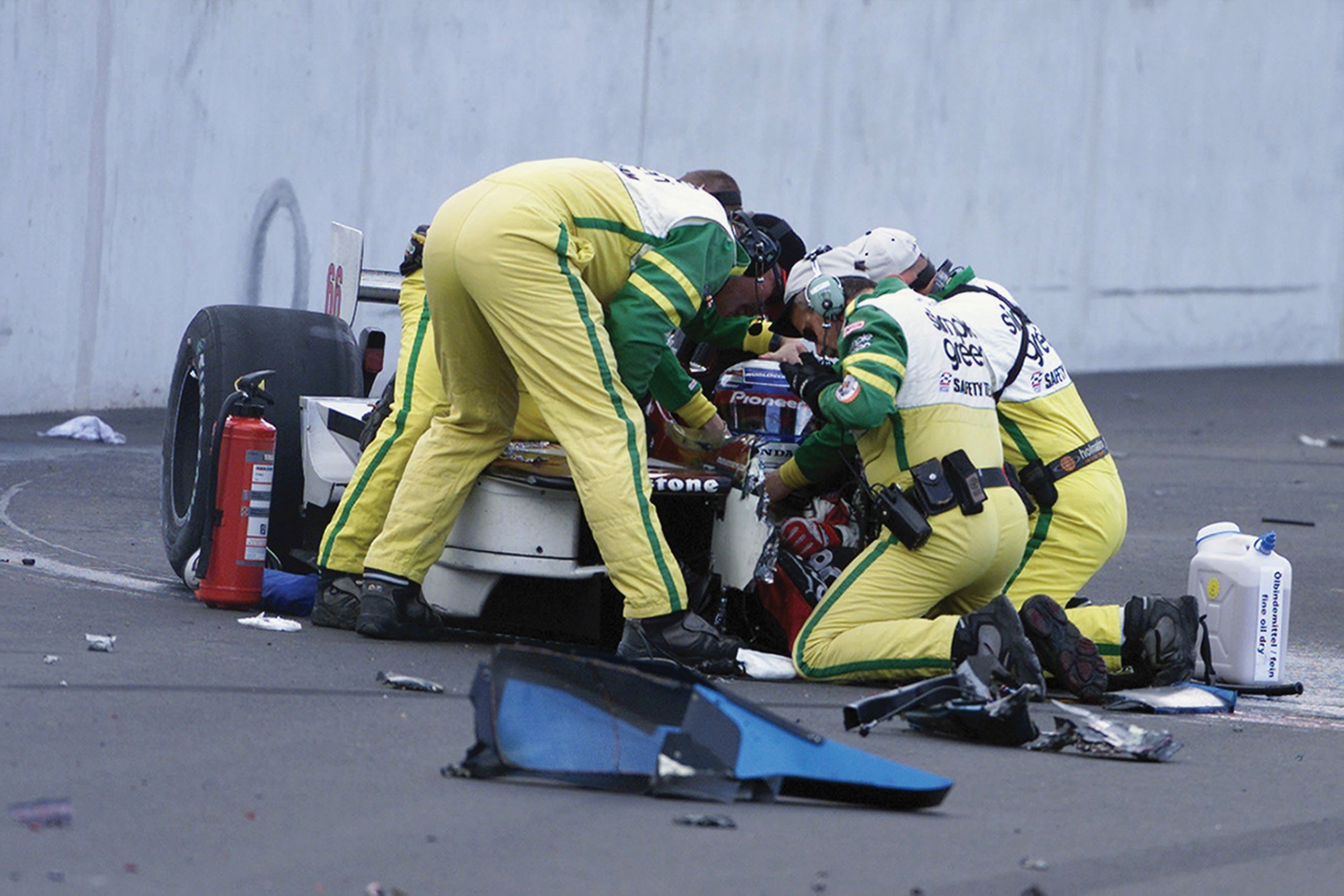
By 1986, he’d won back-to-back European Karting Championships, opening the door to Formula Three. And while his first season in F3 was forgettable, in his second he secured two podiums, two pole positions and even a fastest lap, showing great promise on the grid. By 1990, Zanardi not only finished second in the F3 Championship, he also won the European F3 Cup at Le Mans, besting none other than a young Michael Schumacher.
At the age of 24, Zanardi slipped into the cockpit of a Formula One race car for the first time, racing for team Jordan in the final three Grands Prix of the season, scoring two ninth-place finishes and a DNF (Did Not Finish). It was a promising start to his F1 career but not good enough to secure him a drive for the following season—until a vertebrae-smashing crash by Christian Fittipaldi opened up a seat for another three-race stretch. This trilogy went significantly worse for the young Italian and he wasn’t invited to return to the team.
The following season, in 1993, Zanardi finally earned a seat as a full-time F1 driver for the legendary Lotus F1 Team. But while Lotus had found great glory in the 1970s thanks to wild innovations in weight and aerodynamics, the previous decade had been an ugly stretch for the ailing British team. Unfortunately for Zanardi, the innovation the team hoped would return it to glory—adjustable active suspension—malfunctioned during testing, smashing him into the barrier. Not only did it cost him the last three races, he was repaid for his grit by being fired by team principals.
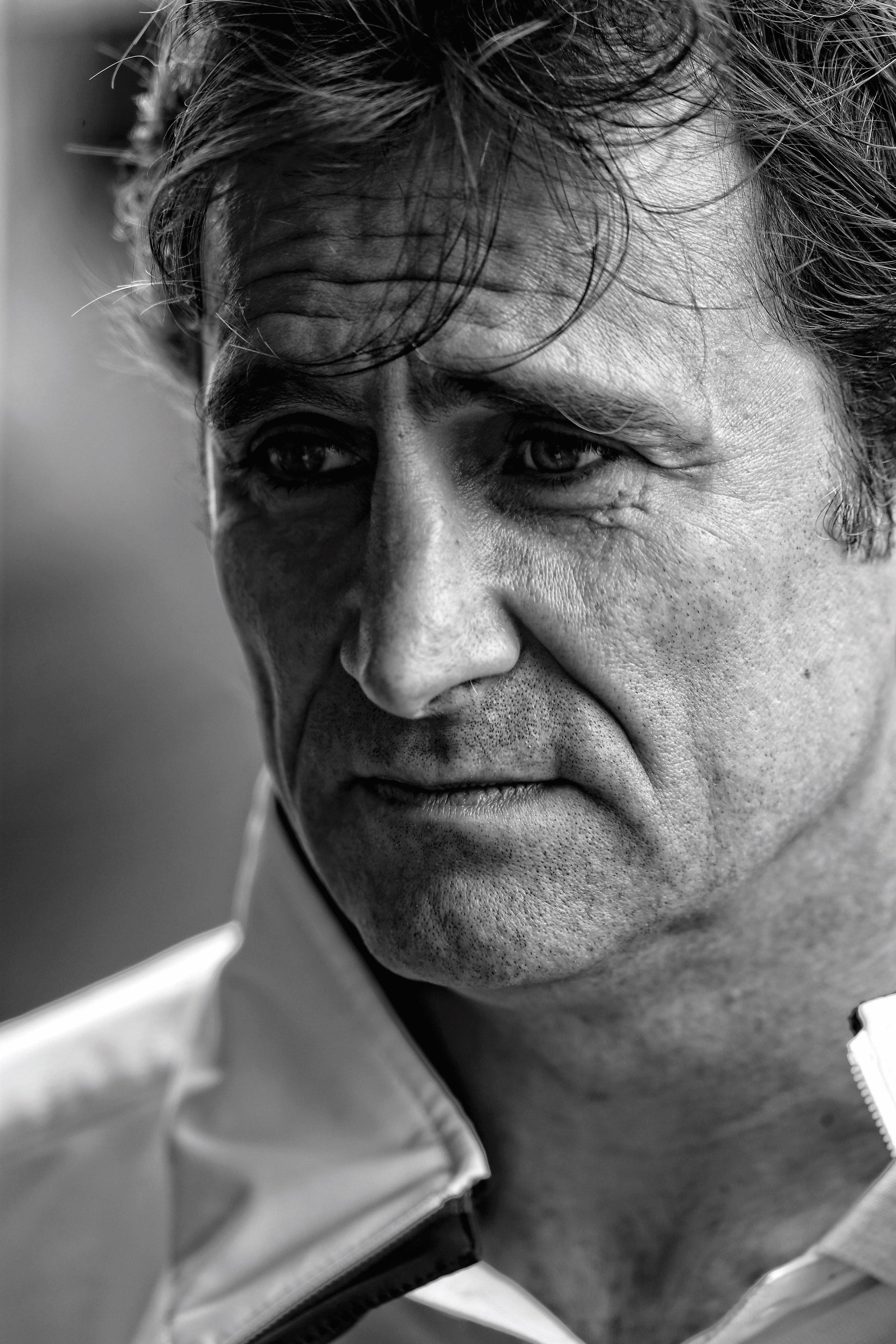
Not only was it the end of his brief F1 career, it was the end of the road for Lotus Racing, which shut down at the end of the 1994 season. That same year, Zanardi’s father died of cancer. With his F1 career apparently in shambles, he did what so many of his European peers did at the time—set sail across the Atlantic to American shores.
It’s here where the proud Italian would find his greatest success racing in CART (Championship Auto Racing Teams), the predecessor that would eventually evolve into IndyCar in 2003. With Hall of Fame driver Al Unser Jr. as a partner, Zanardi snatched pole in only his second race, finishing fourth. By his ninth race he claimed his first checkered flag in Long Beach, where he marked the occasion by burning donuts by Turn 1 of the famed street course. Now a common occurrence, of course, but shockingly the first known such celebration in any motorsport. Fans in the stands were visibly thrilled, and the stunt earned him the nickname “Donut King.” In total Zanardi captured three checkered flags and six pole positions that rookie year, finishing third overall.
In 1997, he won five of 17 races en route to capturing his first CART Drivers’ Championship, which he followed with an even more dominant season in 1998, scoring an unheard-of 15 podiums in only 19 races, winning seven to secure back-to-back Drivers’ Championships. Honda was so grateful for the third engine-manufacturer title he earned them, they collaborated on a highly exclusive Zanardi edition, only 51 made, of their NSX Type S in his honor—the fastest, most unhinged NSX they’d ever built. As one of CART’s most popular drivers, the Donut King had reached the apex of his racing career.
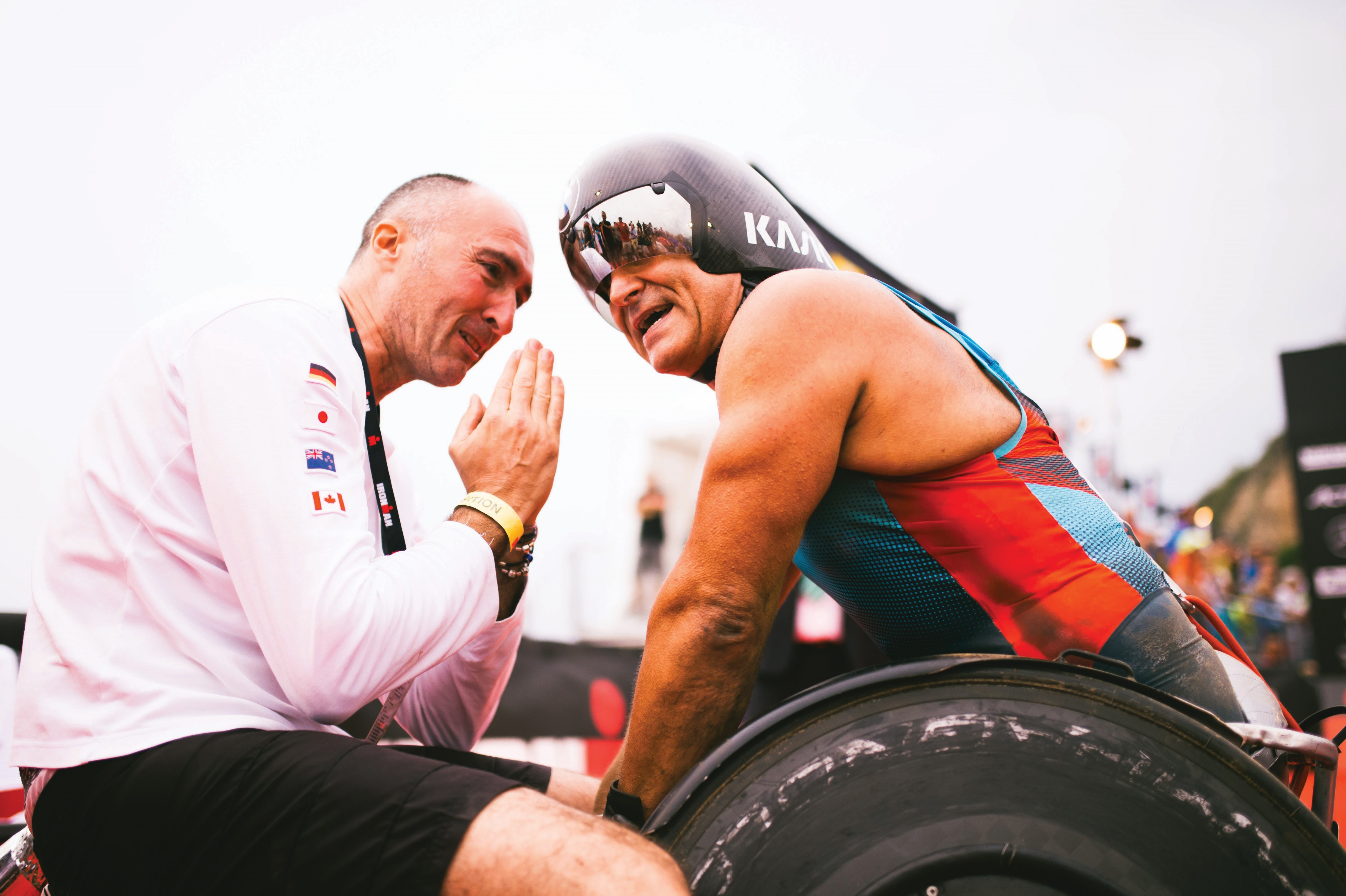
Filled with confidence helped by the birth of his first child that year, Zanardi returned to Europe to try his hand once more in Formula One. While he earned a seat with then superstar team Williams, which had won five Constructors’ Championship in the ’90s, and the two previous (with Damon Hill in ’96 and Jacques Villeneuve in ’97), he couldn’t keep that success going. Once again the F1 curse struck, and Zanardi finished with multiple DNFs. The next year things got even worse. By 2000, he was out of F1 for the last time and contemplated retiring altogether, which in hindsight might have been wise.
His return to CART in 2001 didn’t go as planned, averaging a finishing position of 17th. On September 15, only days after 9/11, CART raced its first European event at the Lausitzring in Brandenburg, Germany. Zanardi started his best race in years, moving up from 22nd on the starting grid to first place. With just 13 laps to go, he entered the pits for a refill and took off, ready to finish up the final 25 miles and score his first checkered flag since 1998. It’s still unknown exactly what happened, but Zanardi claims he hit an oil slick exiting pit lane, spinning across the exit and out onto the track, making himself precariously vulnerable to cars whizzing past at speeds well over 220 mph. Patrick Pontier luckily avoided Zanardi’s car by millimeters; Alex Tagliani did not, colliding against Zanardi with shattering force and sheering off the front of his car, taking his legs with him.
The doctor who approached the crash reported slipping on massive pools of oil, only to realize it was blood. Zanardi had lost two-thirds of his blood, weakening him so much his heart stopped seven times on the heli-vac to the Berlin hospital. It was an all-out miracle he survived the flight, but his fight for life was only beginning. He didn’t wake for a full week. “When I woke up without legs I looked at the half that was left,” Zanardi is quoted as saying, “not the half that was lost.”
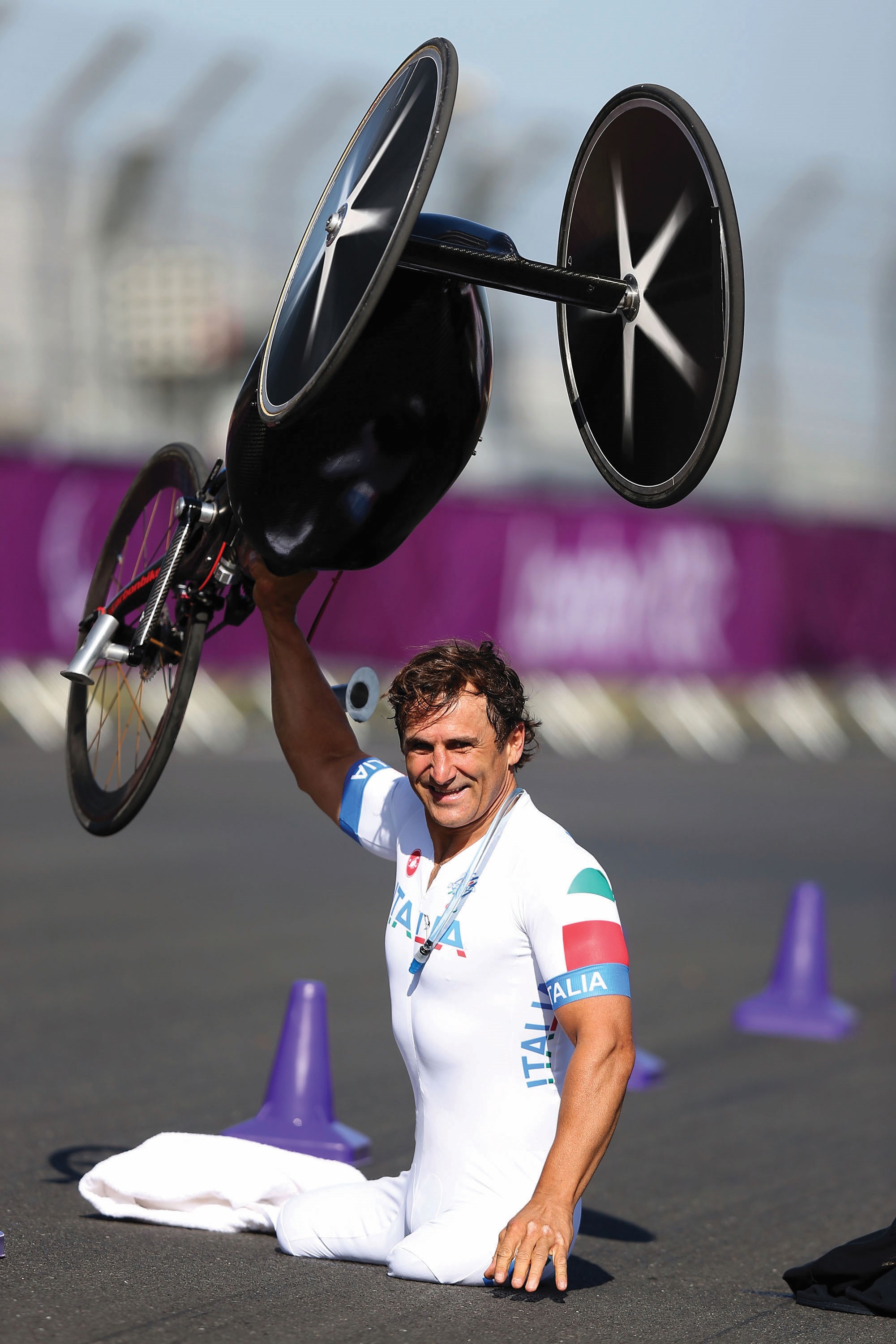
What follows is a testament to human will few others have displayed. Determined to race again, only two years later Zanardi returned to the Lausitzring in a custom IndyCar outfitted with hand controls to ceremoniously finish the 13 laps he couldn’t in 2001. He raced so fast he would have placed 5th on the starting grid. He then joined BMW’s European Touring Car Championship using prosthetic legs he both designed and built, and at his first race in Monza placed 7th. In 2005, he scored his first all-out win in Germany, celebrating the only way he knew how. The Donut King was back burning donuts.
“WHEN I WOKE UP WITHOUT LEGS I LOOKED AT THE HALF THAT WAS LEFT, NOT THE HALF THAT WAS LOST.”
While Zanardi raced professionally until 2009, after finally retiring from motorsport he took up another endeavor: handcycling. Here’s where this illustrious life takes another Forrest Gump–like turn, as he fell in love with the sport after a serendipitous speaking engagement at the 2007 New York City Marathon. Deciding he would need to compete if speaking, he entered the handcycle category and after only four weeks of training finished in 4th place. Another competitive bug had bit, and after dedicating himself full-tilt Zanardi would quickly find success winning the 2009 Venice Marathon, the 2010 Rome Marathon and the New York Marathon in 2011.
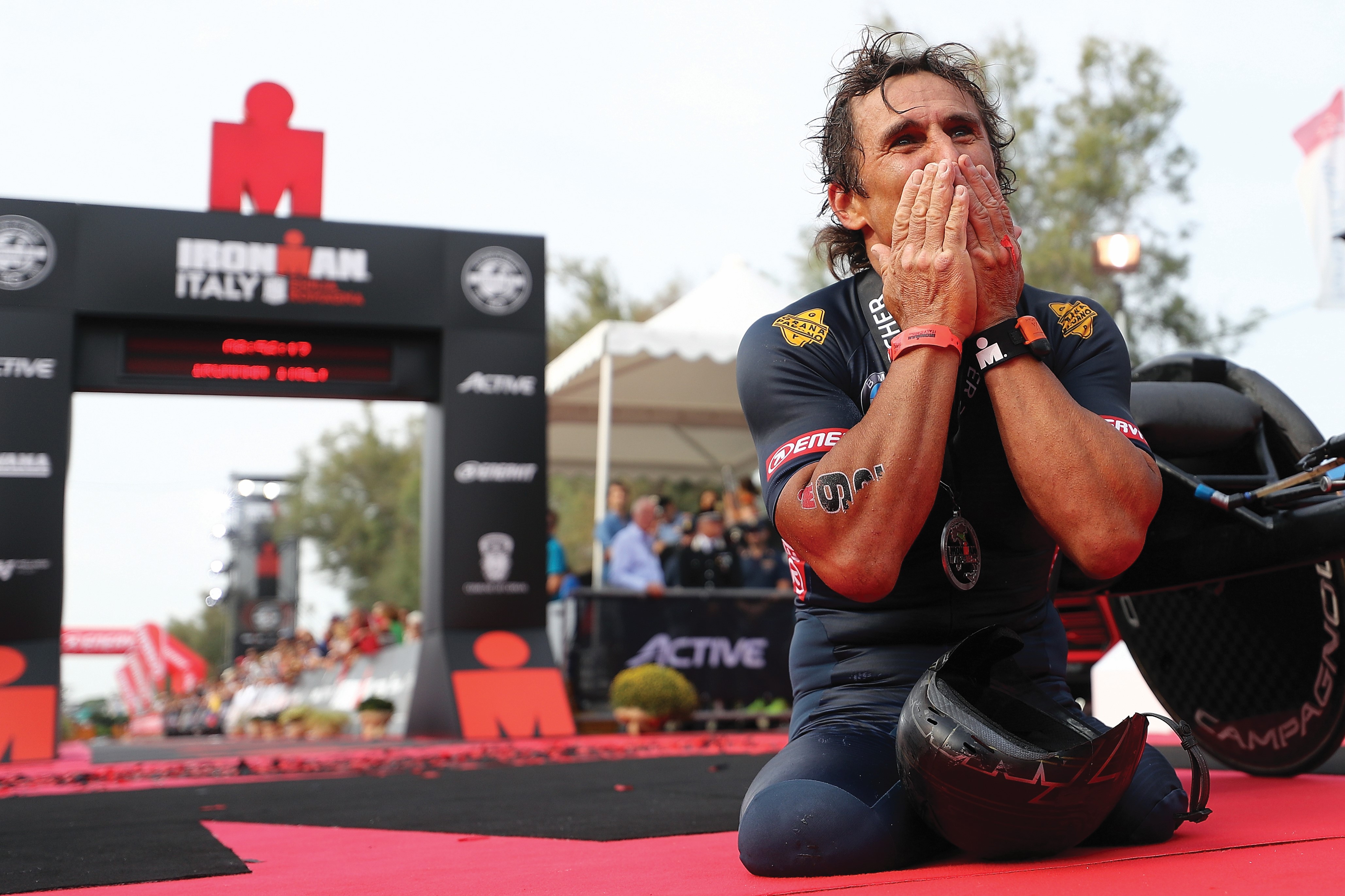
So the former F1 driver set his sights on the 2012 Summer Paralympic Games in London, scoring both gold and silver medals. At the following 2016 Summer Paralympics in Rio de Janeiro, the 45-year-old Zanardi would go on to win two more golds and a silver, finishing with no less than a half-dozen Olympic medals in his career.
With most stories of epic redemption this is where Alex Zanardi’s would come to a close, with a neatly tied “happily ever after” bow. However, that’s not the course the cosmos decided for the great Formula One driver CART champion and Olympic gold medalist. Although the exact details remain foggy, when competing in a road race in Italy in 2020 a hard-running Zanardi apparently lost control of his cycle and veered into a truck head-on. The horrific accident might have been the worst of his life, and he was once again airlifted to a nearby hospital to undergo multiple emergency surgeries to repair severe facial trauma. It would be months before his sight and hearing returned. It required a full year and a half after the accident for Zanardi to recover enough to be released home, where the fearless competitor continues his recuperation at his home near Padua, Italy. His heroic story continues to be written. One can’t help but think of German philosopher Friedrich Nietzsche’s quote, “What doesn’t kill you makes you stronger.”
